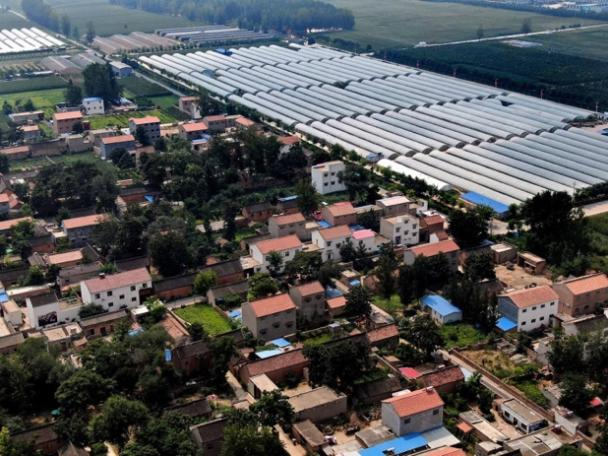Lankao County in central China's Henan Province once was one of the areas in China most severely affected by sandstorms. Situated in the Yellow River Basin, the Yellow River floodplain soil was mainly composed of fine sand and powder sand. Once drought and strong winds strike, the sandy soil would be blown into the air. Miao Guochang, a 70-year-old villager from Fulu Village in Lankao County, describes it as "similar to a sandstorm."
To ease the bad condition of Lankao, Jiao Yulu, the former county Party Secretary of Lankao, led locals to conduct experiments in small areas, such as covering the dunes, summarizing specific governance strategies, and exploring the method of large-scale planting of paulownia trees to resist sandstorms.

Scenery of the Yellow River in Lancao County of central China's Henan Province. /CFP
Scenery of the Yellow River in Lancao County of central China's Henan Province. /CFP
Strong winds, as a "local specialty" in Lankao, have attracted government attention. In addition to "control," can it also be utilized as a resource?

Rooftop solar station in Lancao County of central China's Henan Province. /Photo courtesy to Tsinghua University
Rooftop solar station in Lancao County of central China's Henan Province. /Photo courtesy to Tsinghua University
In China, coal is the main source of energy in rural areas, with low efficiency and high pollution. Meanwhile, rural areas in China are rich in abundant renewable energy resources, such as wind energy, hydro energy, solar energy, and biomass energy. Seeing these high-quality natural resources, Du Xiangwan, academician of the Chinese Academy of Engineering and former Vice President, initiated a rural energy revolution, with Lankao County designated by the National Energy Administration as the first pilot county in July 2018. As a pilot for energy transformation, Lankao County's primary task is to change the energy supply structure. "As a typical large agricultural county, Lankao has rich energy resources such as wind, light, heat, agricultural and forestry waste, and waste from livestock and poultry farming, providing a good foundation for the pilot project of the rural energy revolution," said Wang Xuelin, director and clerk of the Development and Reform Commission of Lankao County.

The current view of Zhangzhuang Village in Lancao County of central China's Henan Province. /Photo courtesy to Tsinghua University
The current view of Zhangzhuang Village in Lancao County of central China's Henan Province. /Photo courtesy to Tsinghua University
In the next few years, Lankao County has completed and put into operation 7940,000 kilowatts of wind power capacity, 319,000 kilowatts of photovoltaic power capacity, and 27 geothermal stations. Additionally, they have completed a 15,000 kilowatts municipal solid waste cogeneration project and a 24,000-kilowatt straw power plant.
The change in energy structure brings significant social benefits: the harmless treatment rate of domestic waste has increased from 30 percent to 100 percent, and the utilization rate of straw and livestock manure resources has reached 96 percent, greatly reducing carbon emissions. Farmers meet their daily electricity needs through distributed rooftop photovoltaic power generation, while excess electricity is fed into the grid, increasing farmers' income. There is sufficient capacity to develop emerging industries, driving the local economy.
For more:
What is zero-carbon village?
(If you have specific expertise and want to contribute, or if you have a topic of interest that you'd like to share with us, please email us at nature@cgtn.com.)




